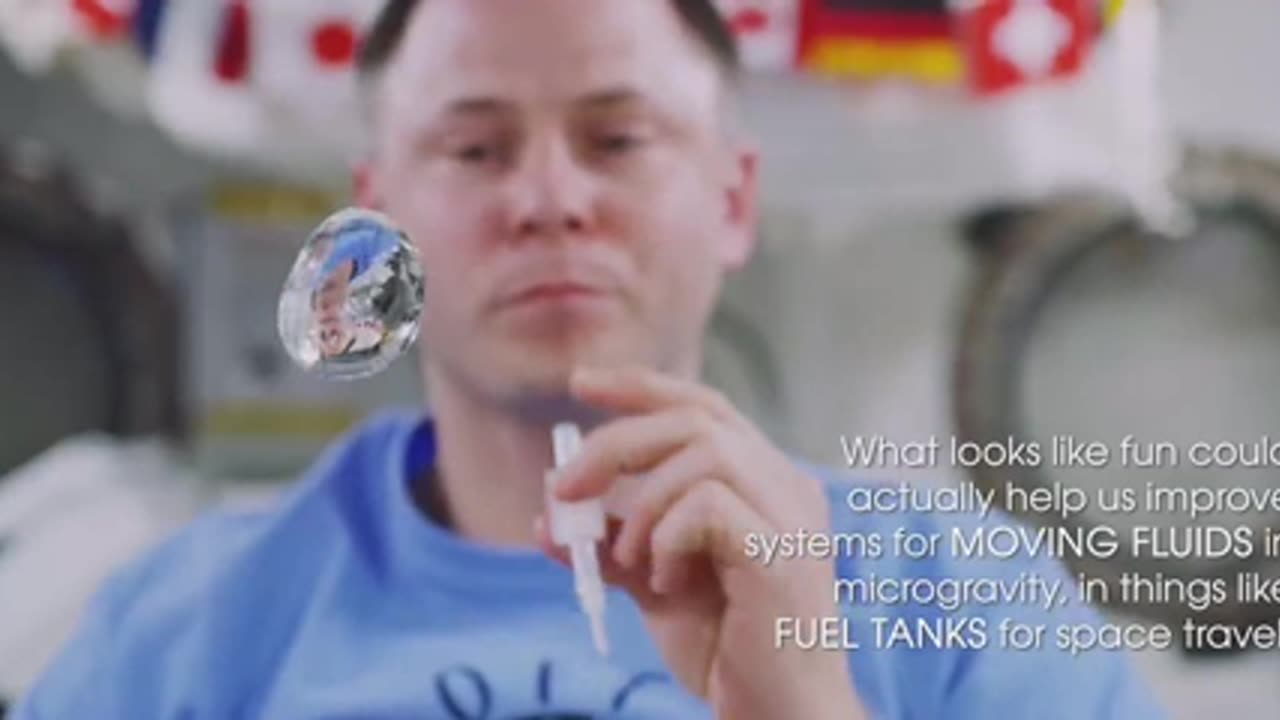Premium Only Content

Moving water in space
Water in Space: The Lifesustaining Elixir Amidst the Cosmos
Water, the elixir of life, has long been regarded as a symbol of abundance and sustenance on our home planet. But what happens when this precious resource finds its way into the vast expanse of space? The idea of water in space might seem peculiar at first, but it plays a pivotal role in our exploration of the cosmos. From its presence on celestial bodies to its importance for sustaining life in long-duration space missions, water holds great significance in our quest to understand and navigate the mysteries of the universe.
Water is not only abundant on Earth; it is also surprisingly prevalent in various forms throughout the cosmos. Astronomers have discovered evidence of water on celestial bodies such as comets, asteroids, and even planets within our own solar system. The presence of water ice on these bodies suggests that water may have played a crucial role in the formation and evolution of the universe. The detection of water vapor in the atmospheres of exoplanets further supports the notion that water is not unique to Earth but rather a fundamental building block of habitable worlds.
One of the most intriguing aspects of water in space is its potential for harboring life. The search for extraterrestrial life has captivated the imaginations of scientists and the general public alike. Water, with its unique properties, serves as a catalyst for the emergence and sustenance of life as we know it. Astrobiologists theorize that where there is water, there may be the conditions necessary for life to thrive. The discovery of microbial life in extreme environments on Earth, such as deep-sea hydrothermal vents and Antarctic subglacial lakes, has expanded our understanding of the limits of life and its potential existence beyond our planet.
In our quest to explore and colonize space, water takes on a whole new level of importance. It is not only a resource vital for human survival but also a versatile tool that can be harnessed for various purposes. In the context of long-duration space missions, such as those planned for Mars or beyond, water becomes a critical component of life support systems. It can be used for drinking, hygiene, food production, and even as a radiation shield. Furthermore, water can be broken down into its constituent elements, hydrogen and oxygen, through electrolysis, providing breathable air and rocket propellant for future space exploration.
The challenges associated with obtaining and utilizing water in space are significant. In the harsh environment of space, where temperatures can range from extreme cold to scorching heat, water can exist in different states, from solid ice to vapor. The absence of atmospheric pressure also means that water boils at lower temperatures, making storage and handling complex. However, advancements in technology and space exploration have opened up new avenues for overcoming these challenges.
One method of accessing water in space is through the mining of celestial bodies such as asteroids or the moon. These bodies contain deposits of water ice that could be extracted and utilized by future astronauts. In fact, NASA's Artemis program aims to establish a sustainable human presence on the moon by 2024, with a key focus on utilizing local resources, including water. Additionally, scientists are exploring the possibility of terraforming Mars by liberating water trapped beneath its surface, thereby transforming it into a more habitable environment for human settlement.
Another approach to obtaining water in space involves the utilization of advanced technologies for water recycling and purification. Closed-loop life support systems, capable of recycling and reusing water, are crucial for long-duration space missions where resupply from Earth is not feasible. NASA's International Space Station (ISS) already employs such systems, filtering and purifying wastewater for reuse. These systems serve as a blueprint for future deep space missions, where water will be a valuable and limited resource.
Beyond its utilitarian value
-
 2:42:40
2:42:40
TruthStream with Joe and Scott
14 hours agoTHOMAS AND GROK: AI, Bible decodes, The JESUS Cube live 9/6 #487
25K2 -
 2:34:46
2:34:46
BlackDiamondGunsandGear
8 hours agoGet Prepped / After Hours Armory / LIVE SHOW /
17K1 -
 2:01:39
2:01:39
Tundra Tactical
7 hours ago $6.38 earned🛑LIVE NOW!! This spits in the face of the Second Amendment.🛑
27.1K4 -
 2:34:46
2:34:46
DLDAfterDark
6 hours ago $1.64 earnedIt's SHTF! Do You Have What You Need?? Let's Review Items & Priorities
19.1K4 -
 28:58
28:58
Stephen Gardner
7 hours ago🚨Explosive allegations: Rosie O’Donnell connects Trump to Epstein scandal!?
33.9K60 -
 LIVE
LIVE
SavageJayGatsby
2 days agoSpicy Saturday | Let's Play: Grounded
504 watching -
 2:06:27
2:06:27
MattMorseTV
8 hours ago $50.92 earned🔴Vance just went SCORCHED EARTH.🔴
128K180 -
 46:41
46:41
The Mel K Show
13 hours agoMel K & Corey DeAngelis | The Hopelessly Captured Teacher’s Unions: Biggest Threat to Our Children & Future | 9-6-25
36.5K5 -
 2:52:42
2:52:42
Mally_Mouse
1 day ago🔥🍺Spicy HYDRATE Saturday!🍺🔥-- Let's Play: Grounded
32.7K3 -
 1:32:27
1:32:27
Patriots With Grit
8 hours ago"HELP... They're Killing Me" | Gail Seiler
13.6K1